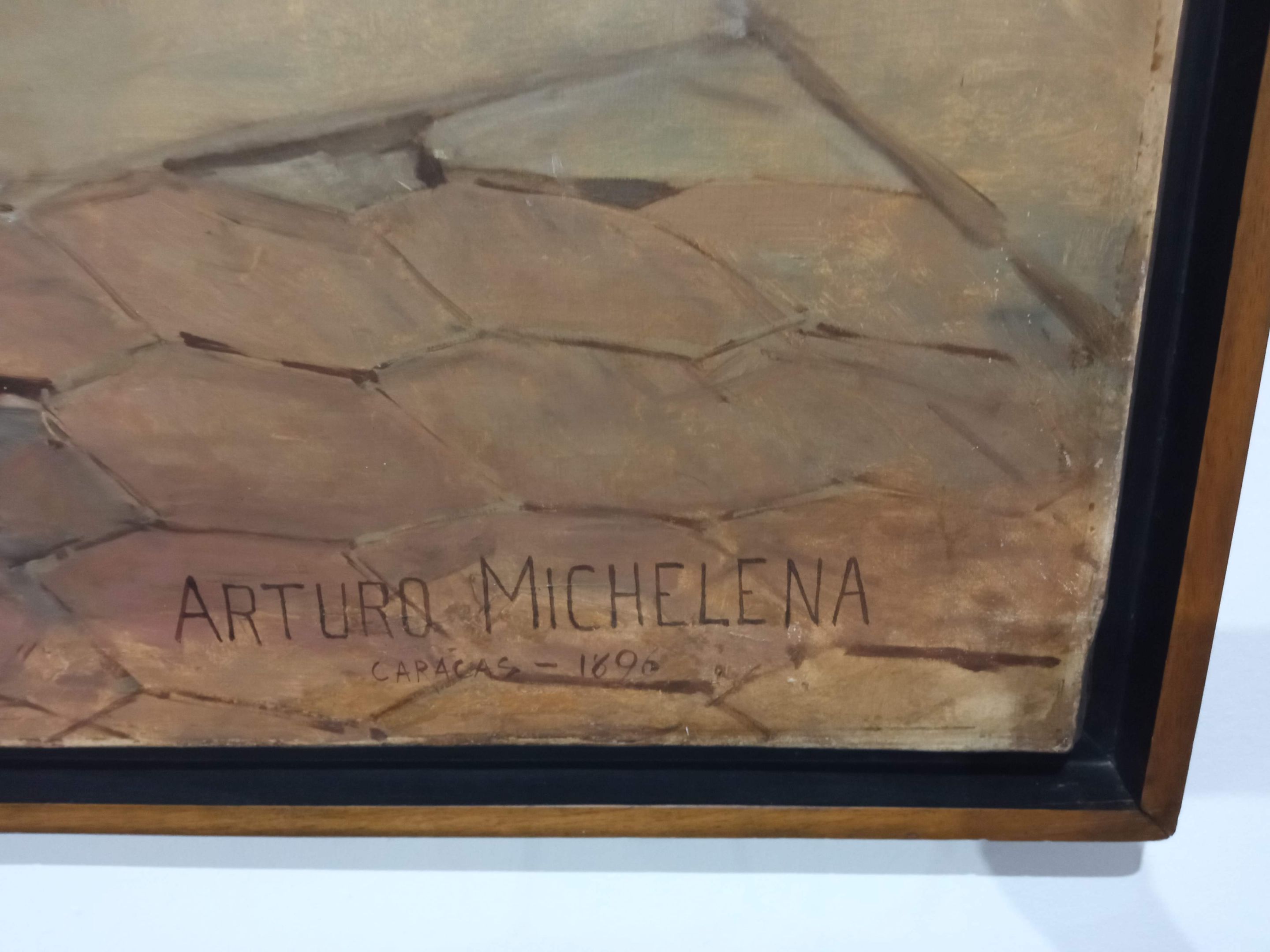
Estimada comunidad HIVE, el post de hoy trata sobre una de las obras emblemáticas de la pintura venezolana del XIX, me refiero a Miranda en la Carraca de Arturo Michelena (Venezuela, 1863-1898). Esta pintura ha sido ampliamente comentada en los medios digitales, así como en diversos textos y catálogos entre otras publicaciones.
>Dear HIVE community, today's post is about one of the emblematic works of 19th century Venezuelan painting, I am referring to Miranda en la Carraca by Arturo Michelena (Venezuela, 1863-1898). This painting has been widely commented in the digital media, as well as in various texts and catalogs among other publications.

En este post, haré un breve análisis de este lienzo que fue realizado en 1896, en ocasión de cumplirse 80 años del fallecimiento del General Francisco de Miranda (Caracas, 1750-España, 1816), conocido como el precursor de la Independencia de Venezuela. Dicha obra fue presentada ante la sociedad caraqueña el 18 de julio de 1896, en el Teatro Municipal de Caracas.
In this post, I will make a brief analysis of this canvas that was made in 1896, on the occasion of the 80th anniversary of the death of General Francisco de Miranda (Caracas, 1750-Spain, 1816), known as the precursor of the Independence of Venezuela. This work was presented to the Caracas society on July 18, 1896, at the Municipal Theater of Caracas.
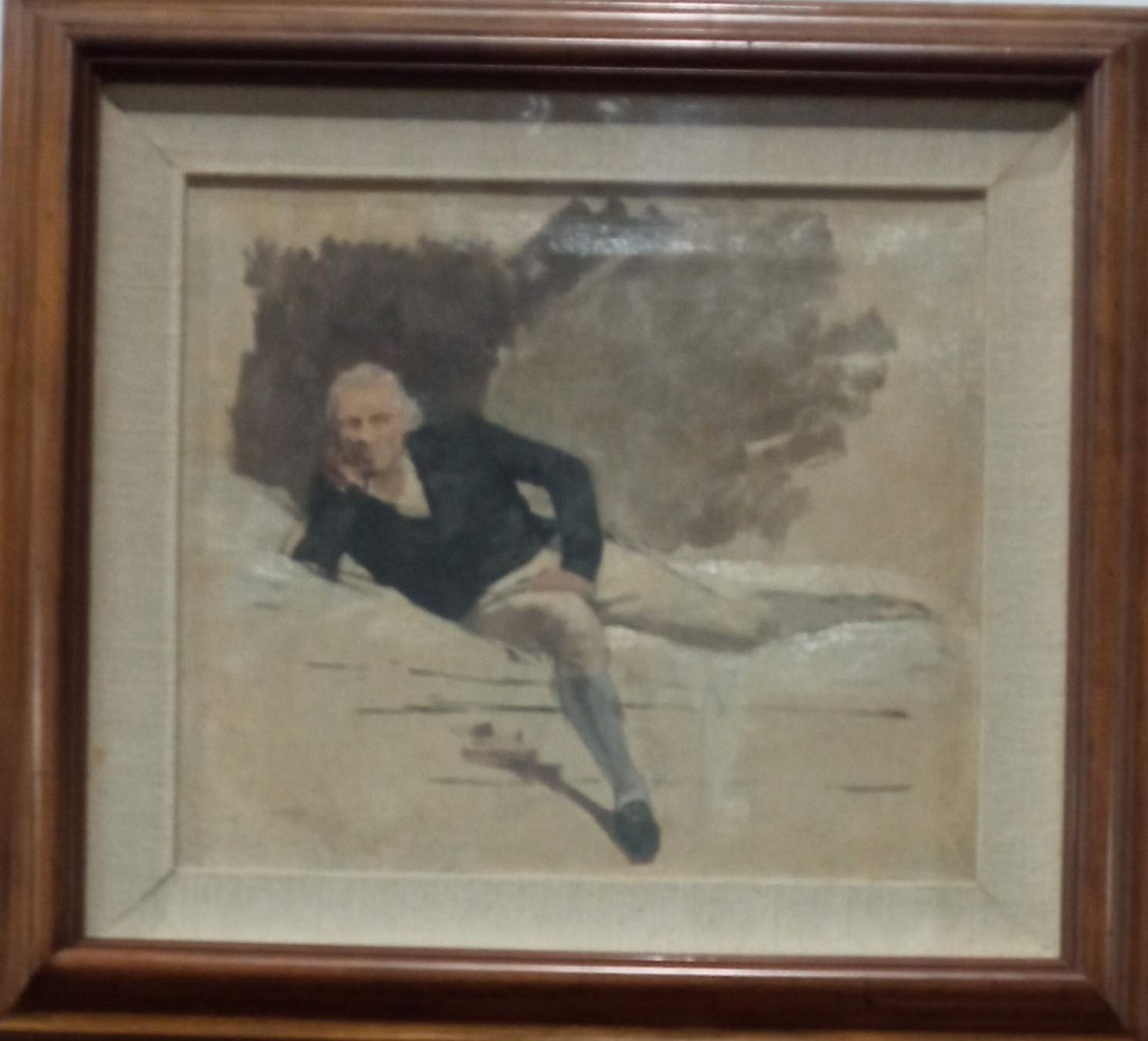

En esta pintura Miranda es retratado en su etapa final, cuando fue hecho prisionero en la cárcel de la Carraca, ubicada en Cádiz, España. A partir de un boceto preliminar, titulado Estudio para Miranda en la Carraca, 1896, ejecutado en un formato pequeño (38,7 x 44,5cm), el artista proyecta la escena que posteriormente llevará sobre un lienzo más amplio que mide 197 x 245,2 cm. Con un estilo académico el autor desarrolla el tema con la tradicional técnica de la pintura al óleo.
In this painting Miranda is portrayed in his final stage, when he was taken prisoner in the Carraca prison, located in Cadiz, Spain. From a preliminary sketch, entitled Study for Miranda at the Carraca, 1896, executed in a small format (38.7 x 44.5 cm), the artist projects the scene that he will later carry on a larger canvas measuring 197 x 245.2 cm. With an academic style the author develops the theme with the traditional technique of oil painting.
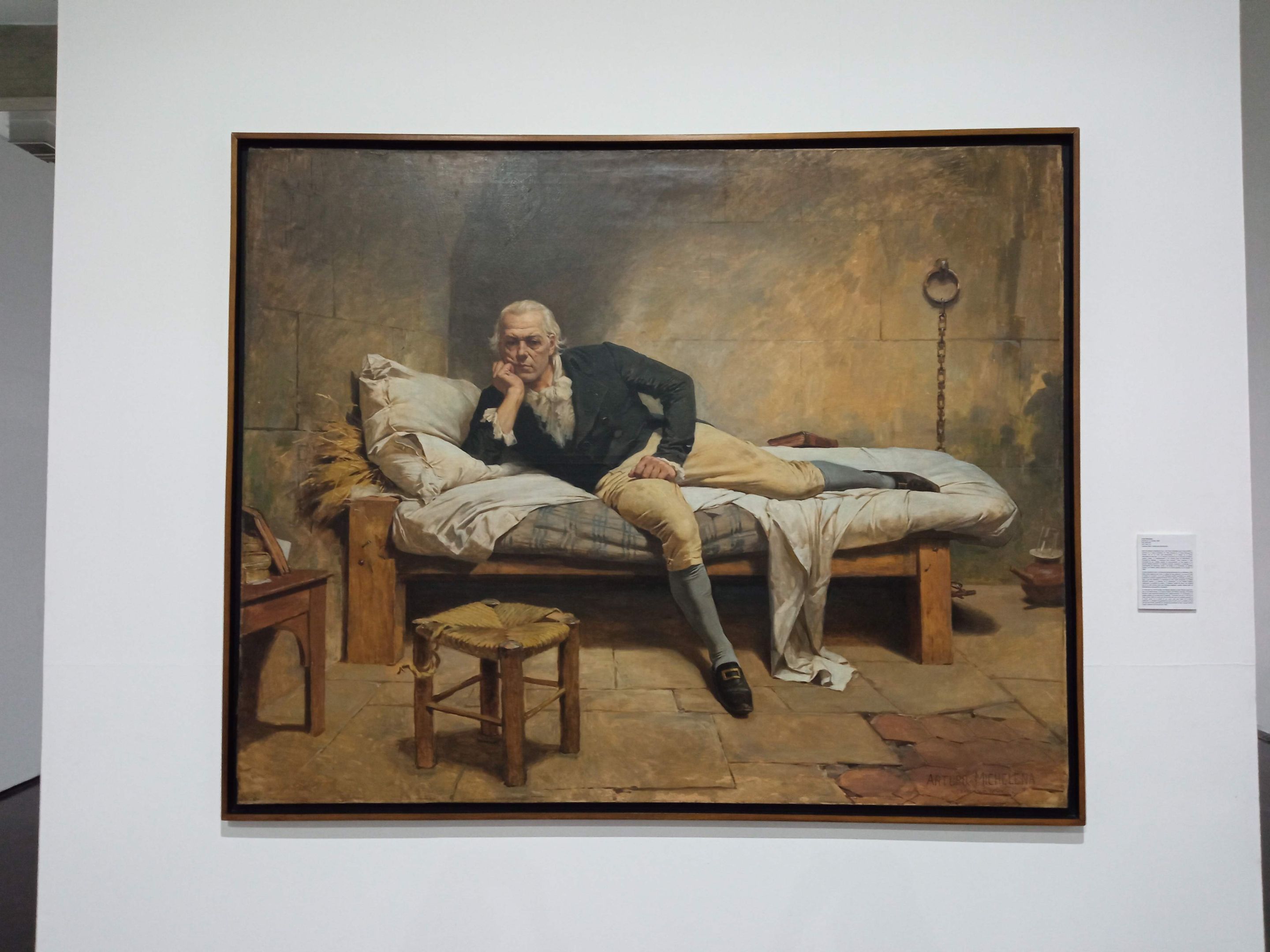
A pesar de la atmósfera tenebrista que suelen transmitir los presidios y calabozos de la época, Michelena logra iluminar la composición mediante el uso de tonos blancos, amarillos, ocres y pardos a fin de resaltar la presencia del prócer, colocado –estratégicamente– en el centro del espacio para enfatizar su rol protagónico.
Despite the gloomy atmosphere that the prisons and dungeons of the time usually convey, Michelena manages to illuminate the composition through the use of white, yellow, ochre and brown tones in order to highlight the presence of the hero, placed -strategically- in the center of the space to emphasize his leading role.
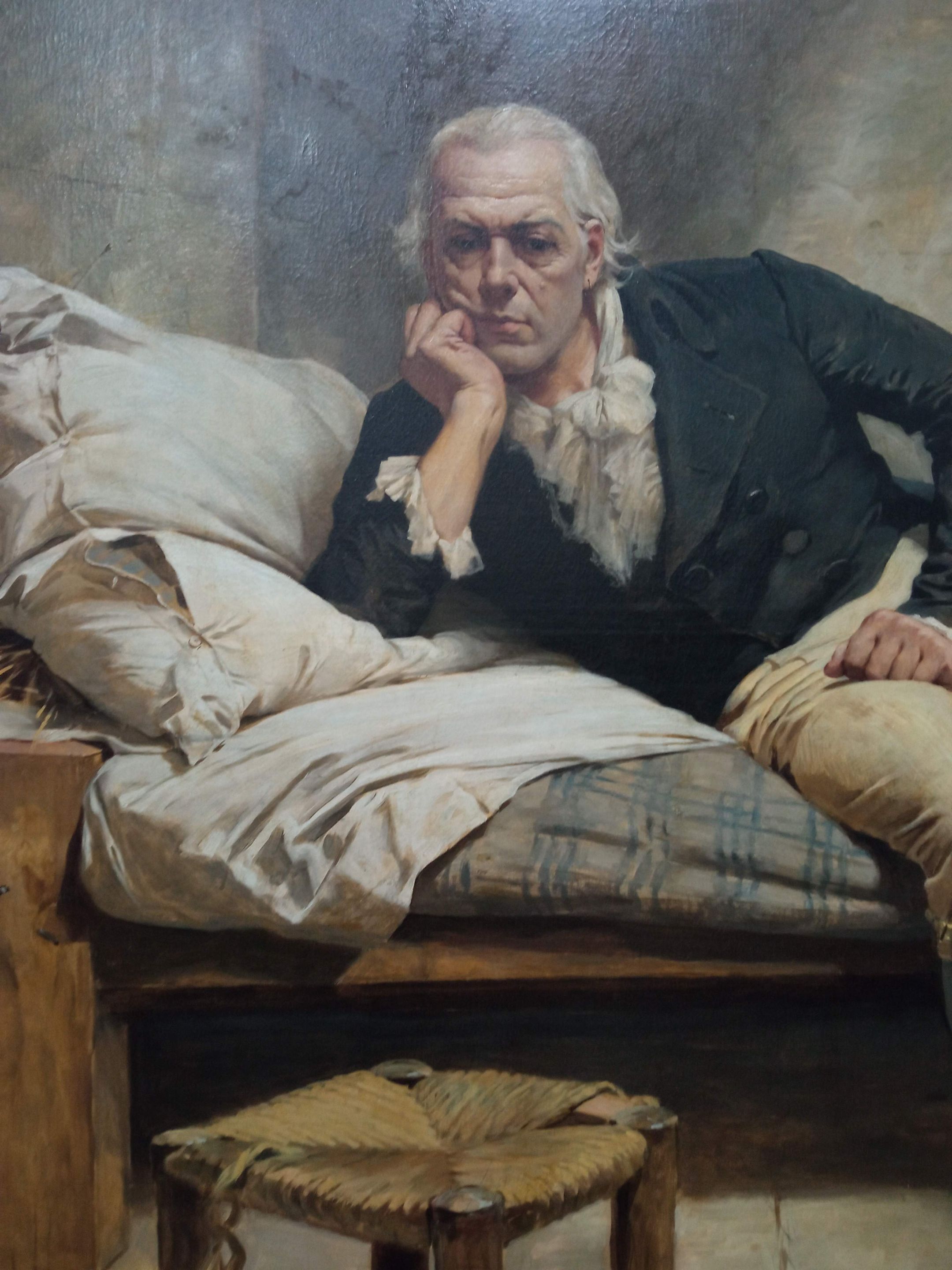
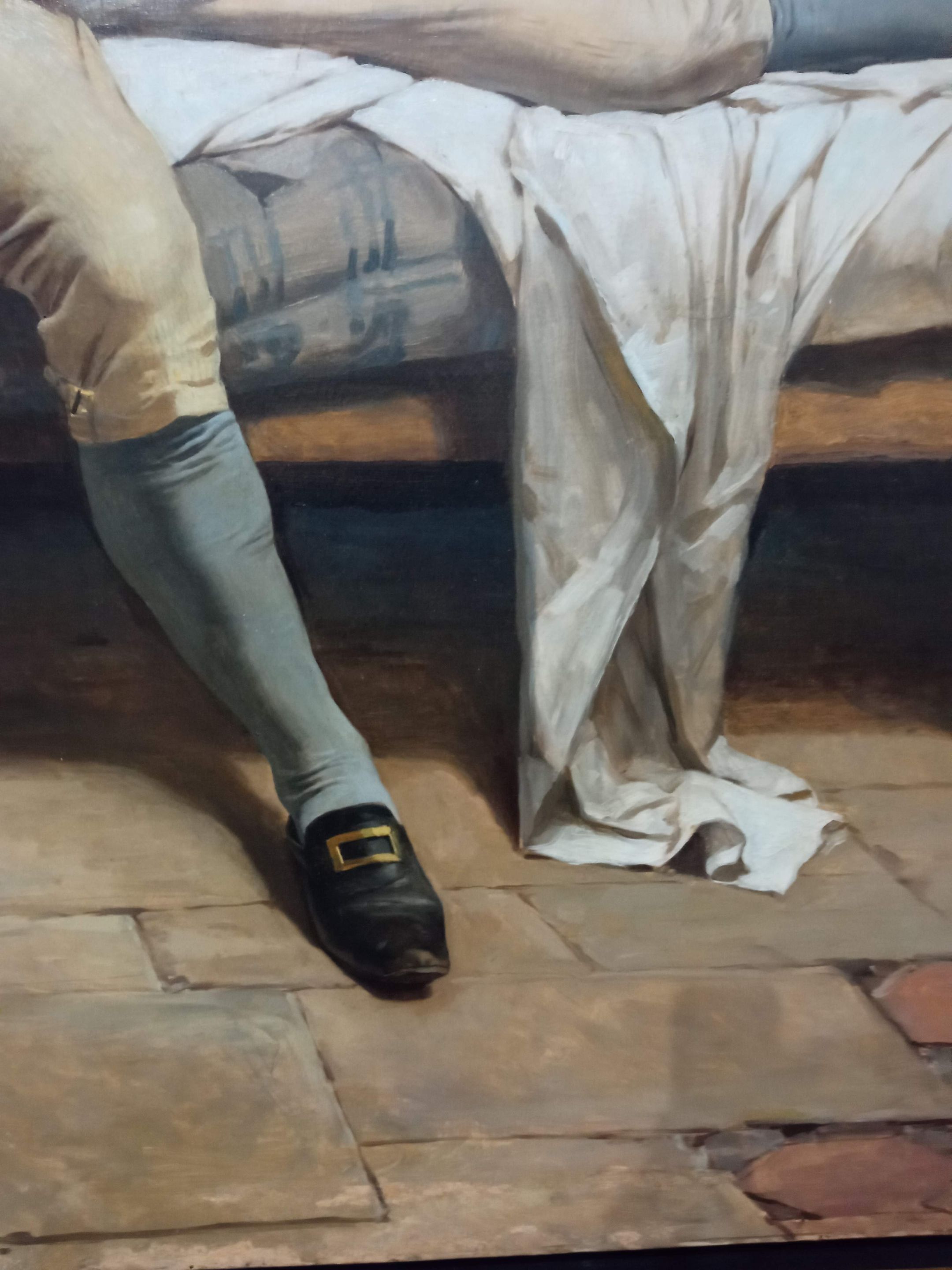

Por otra parte, incluye detalles que describen los rasgos psicológicos del personaje, tanto en la expresión de la mirada como en la postura del cuerpo yacente sobre el diván. La vestimenta cuidadosamente seleccionada, ajustada a la moda de ese período, es otro indicativo del rango y posición social que ocupó en su momento, tal como lo muestra la chaqueta negra con solapa ancha y botones cruzados hasta la cintura, la camisa blanca con volantes en el cuello y mangas, el pantalón ceñido al cuerpo por debajo de la rodilla, rematando con el uso de calcetines y zapatillas negras con hebilla de metal. Cabe destacar que el escritor y político Eduardo Blanco (Caracas, Venezuela, 1838-1912), autor del relato titulado Venezuela heroica, de 1881, sirvió de modelo para que Michelena pintara a Miranda en su funesto desenlace.
On the other hand, it includes details that describe the psychological features of the character, both in the expression of the gaze and in the posture of the body lying on the divan. The carefully selected clothing, adjusted to the fashion of that period, is another indication of the rank and social position he occupied at the time, as shown by the black jacket with wide lapel and crossed buttons to the waist, the white shirt with ruffles on the collar and sleeves, the tight-fitting pants below the knee, topped off with the use of socks and black sneakers with metal buckle. It is worth mentioning that the writer and politician Eduardo Blanco (Caracas, Venezuela, 1838-1912), author of the story entitled Heroic Venezuela, of 1881, served as a model for Michelena to paint Miranda in his disastrous end.
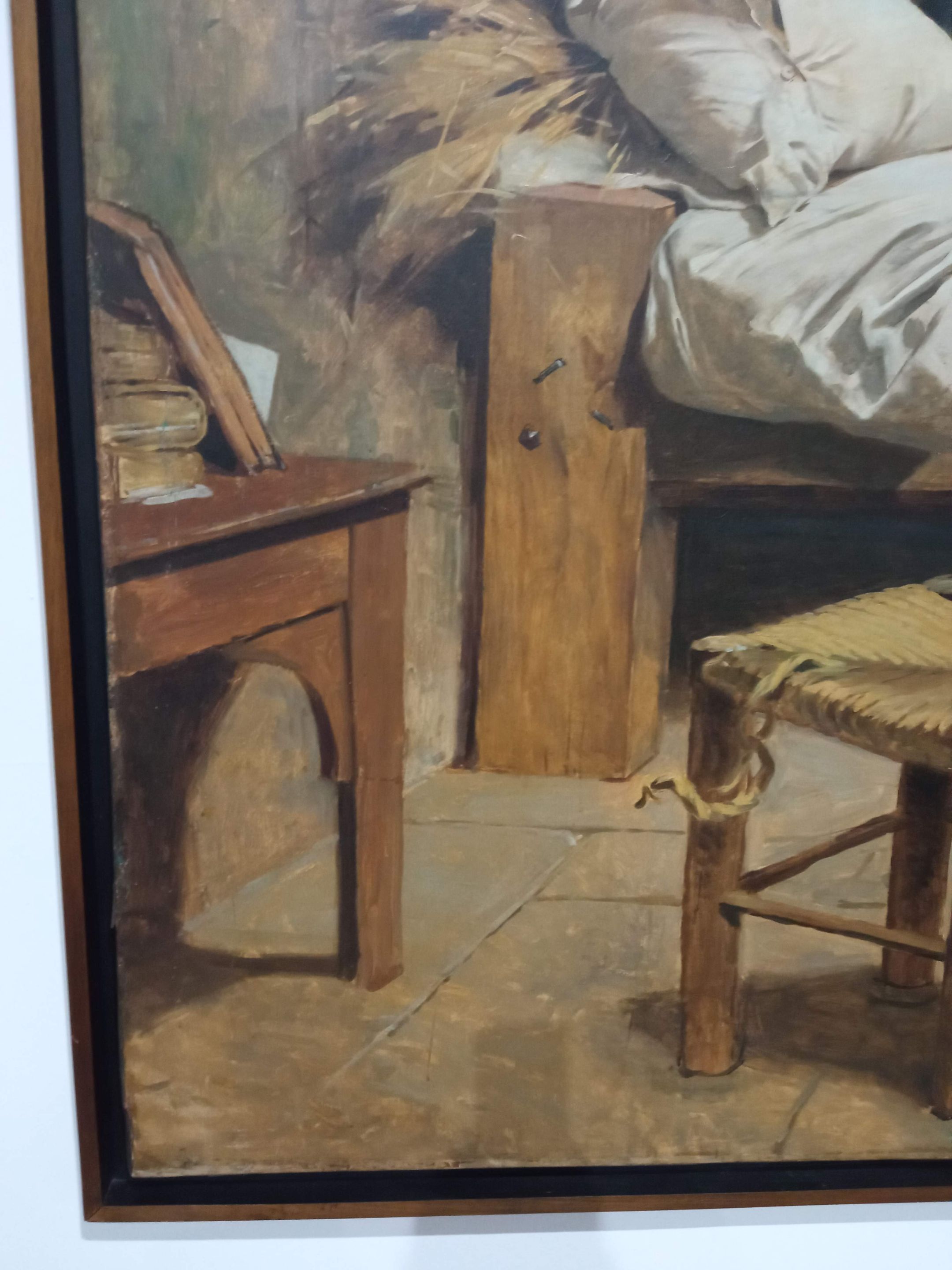
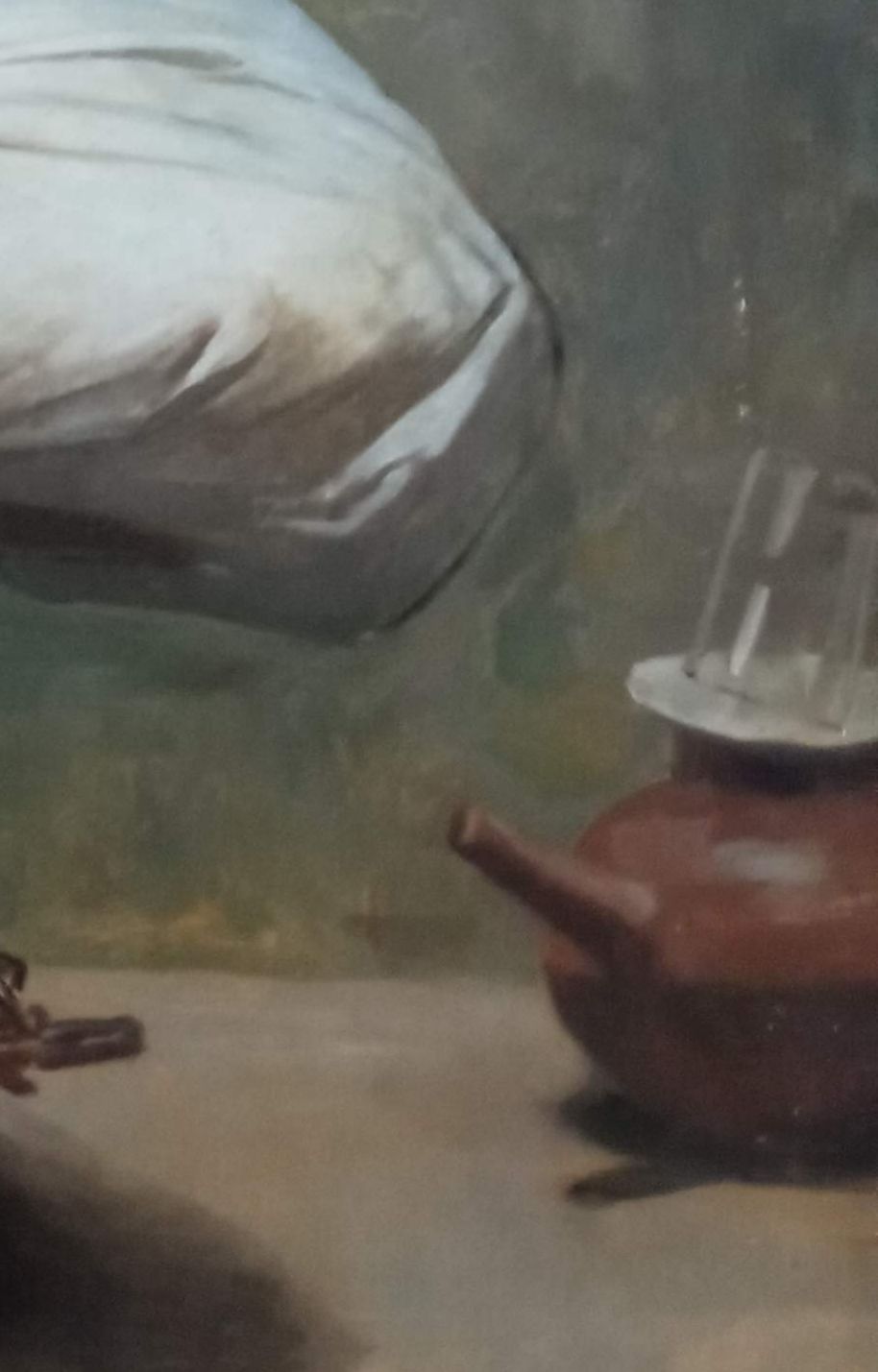
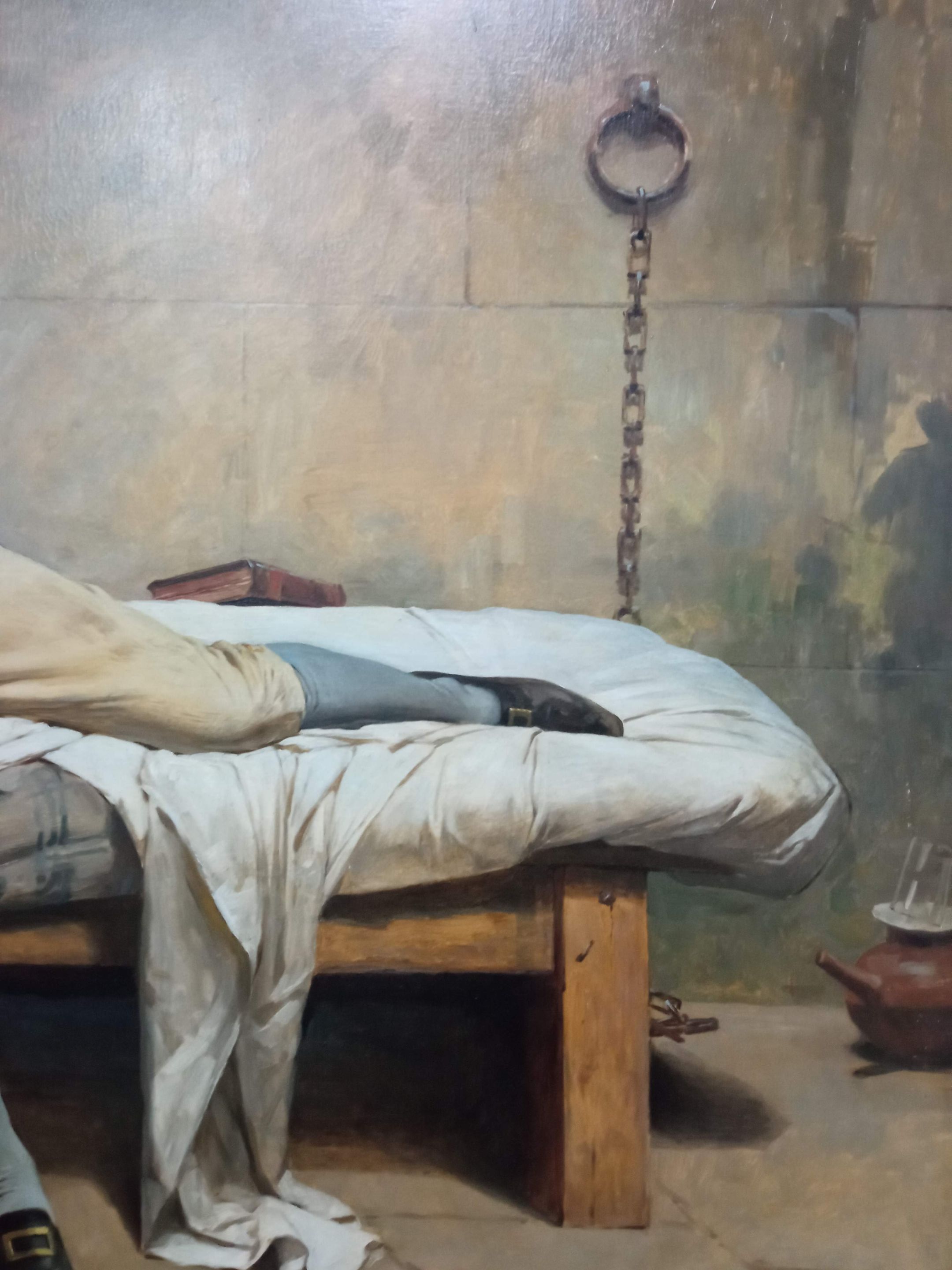
Es oportuno señalar algunos accesorios decorativos, entre los que destacan sábanas, almohada, una repisa con libros, un banco, una jarra con agua, etc., que complementan el discurso pictórico que exalta, aún dentro de su trágica derrota, el carácter intelectual y humanista de este ilustre prisionero, antes de su muerte acaecida en ese lugar el 14 de julio de 1816.
It is appropriate to point out some decorative accessories, including sheets, a pillow, a shelf with books, a bench, a pitcher with water, etc., which complement the pictorial discourse that exalts, even in his tragic defeat, the intellectual and humanist character of this illustrious prisoner, before his death on July 14, 1816.
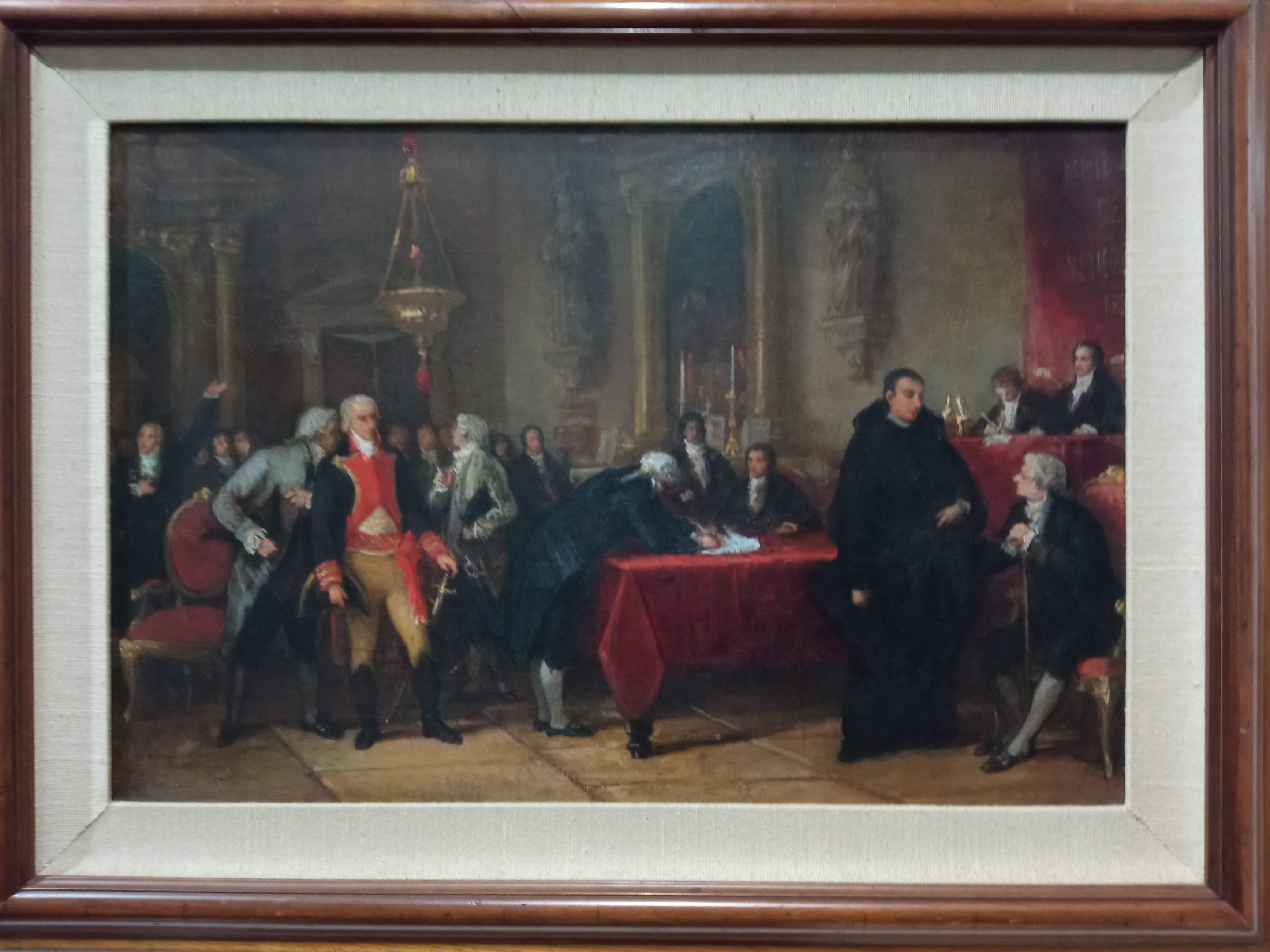
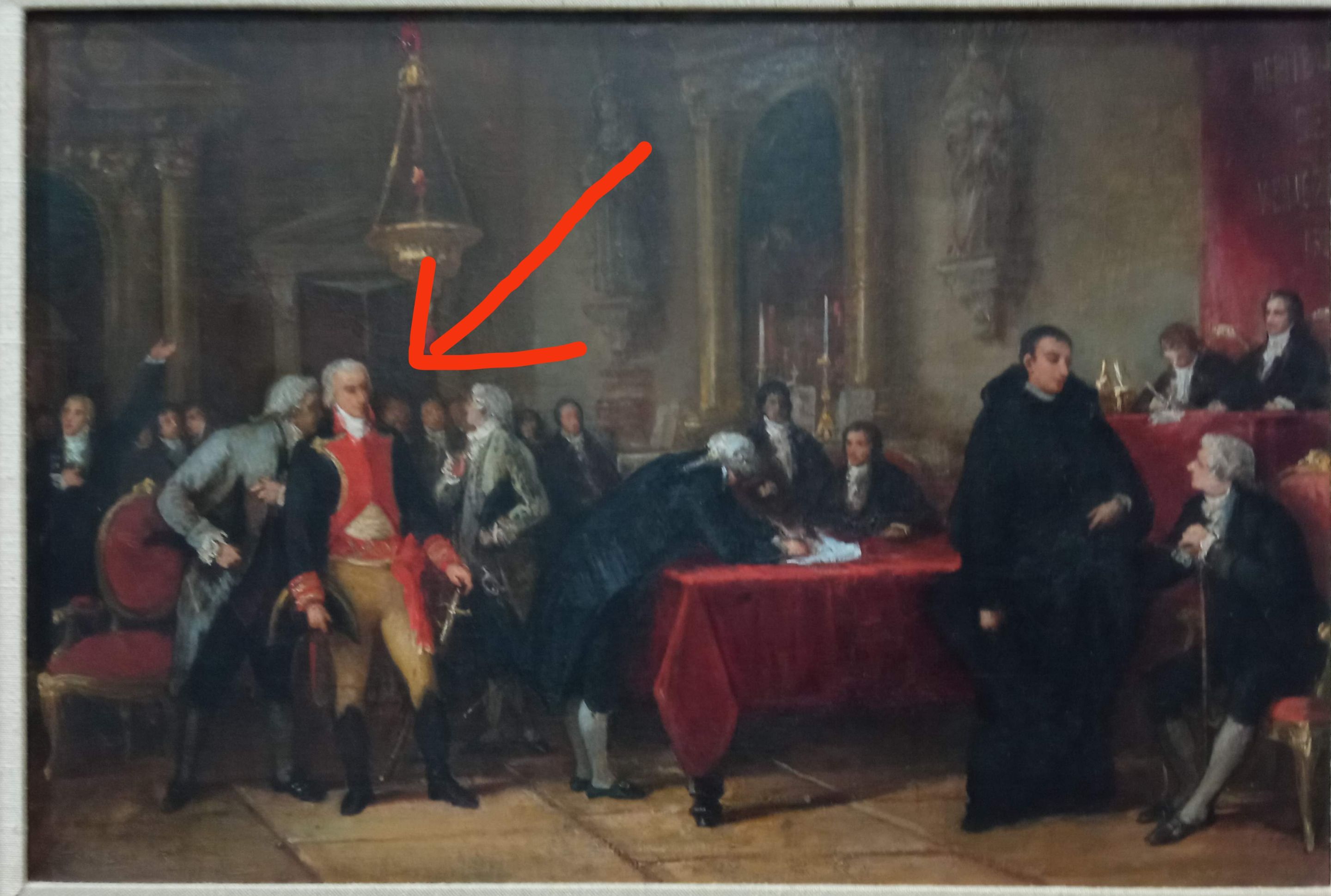
Resulta curioso observar como el pintor escogió un momento de declive en la vida de Francisco de Miranda y no una escena épica o heroica, acorde con las hazañas y epopeyas de quien fuera apodado el “americano más universal”, por su participación en eventos históricos de trascendencia internacional, como fueron la Revolución Francesa y las gestas emancipadoras de los Estados Unidos, Chile y Venezuela. Una representación de esas actuaciones memorables es el Boceto para la firma del Acta de la Independencia, realizado por el artista Martín Tovar y Tovar (Caracas, Venezuela, 1827-1902) en 1876, en cuya composición se ubica la figura de Miranda a la izquierda del cuadro, junto con otros patriotas, participantes de aquel histórico acontecimiento relativo a la Independencia de Venezuela.
Con Miranda en la Carraca, 1896, Arturo Michelena marcó un hito en la historia de la pintura venezolana, ya que fue galardonado con la medalla de oro y laureado por su trabajo por la sociedad caraqueña de su tiempo. En la actualidad, dicha pintura forma parte del imaginario colectivo de los venezolanos, especialmente de los artistas quienes han interpretado y reinterpretado, desde distintos enfoque, su visión entorno a ese episodio.
It is curious to observe how the painter chose a moment of decline in the life of Francisco de Miranda and not an epic or heroic scene, in accordance with the exploits and epics of the man who was nicknamed the “most universal American”, for his participation in historical events of international transcendence, such as the French Revolution and the emancipatory deeds of the United States, Chile and Venezuela. A representation of those memorable performances is the Sketch for the Signing of the Act of Independence, made by the artist Martín Tovar y Tovar (Caracas, Venezuela, 1827-1902) in 1876, in whose composition the figure of Miranda is located to the left of the painting, together with other patriots, participants of that historical event related to the Independence of Venezuela.
>With Miranda en la Carraca, 1896, Arturo Michelena marked a milestone in the history of Venezuelan painting, since he was awarded the gold medal and laureate for his work by the Caracas society of his time. Today, this painting is part of the collective imagination of Venezuelans, especially of artists who have interpreted and reinterpreted, from different approaches, their vision of this episode.
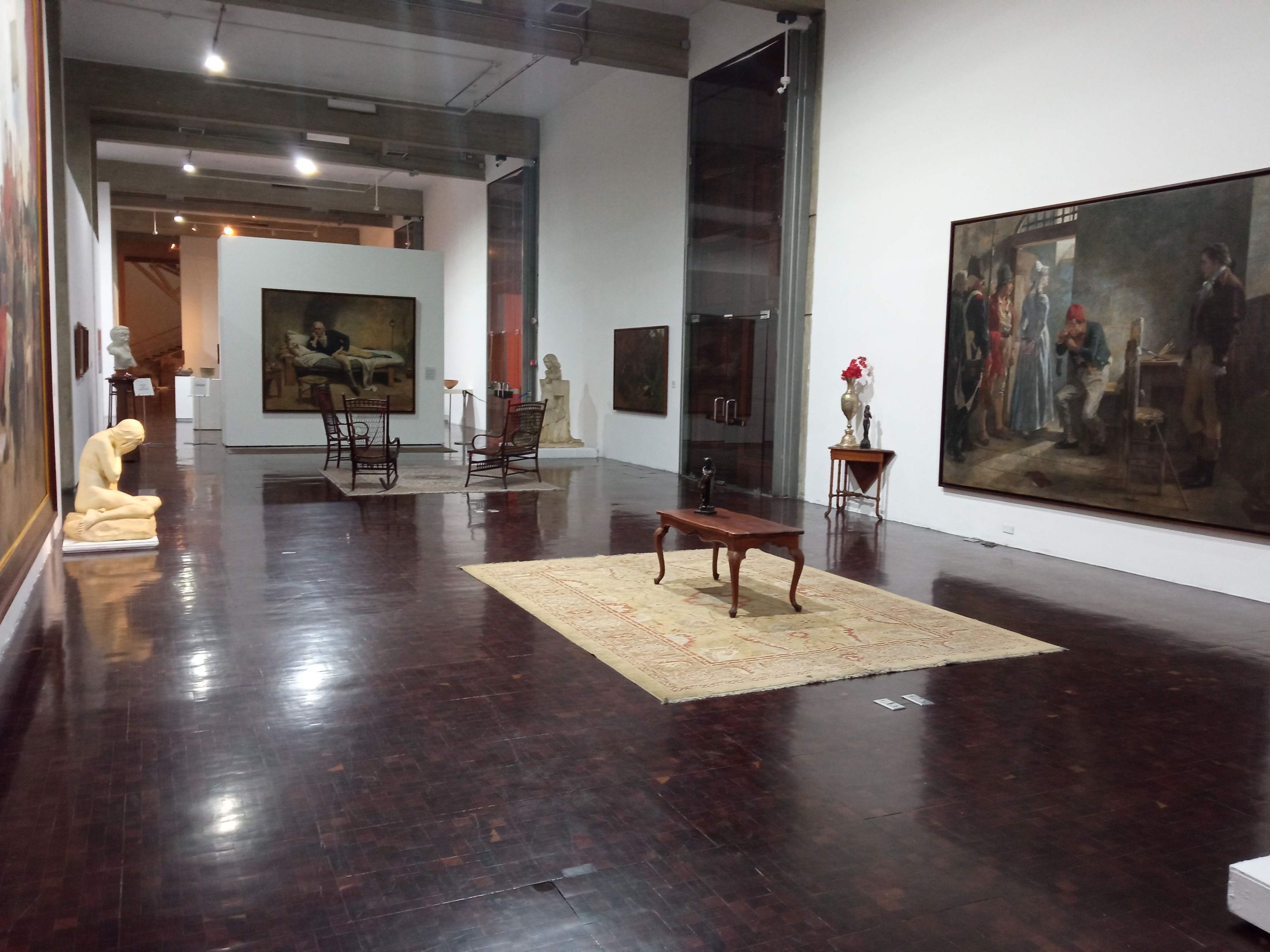
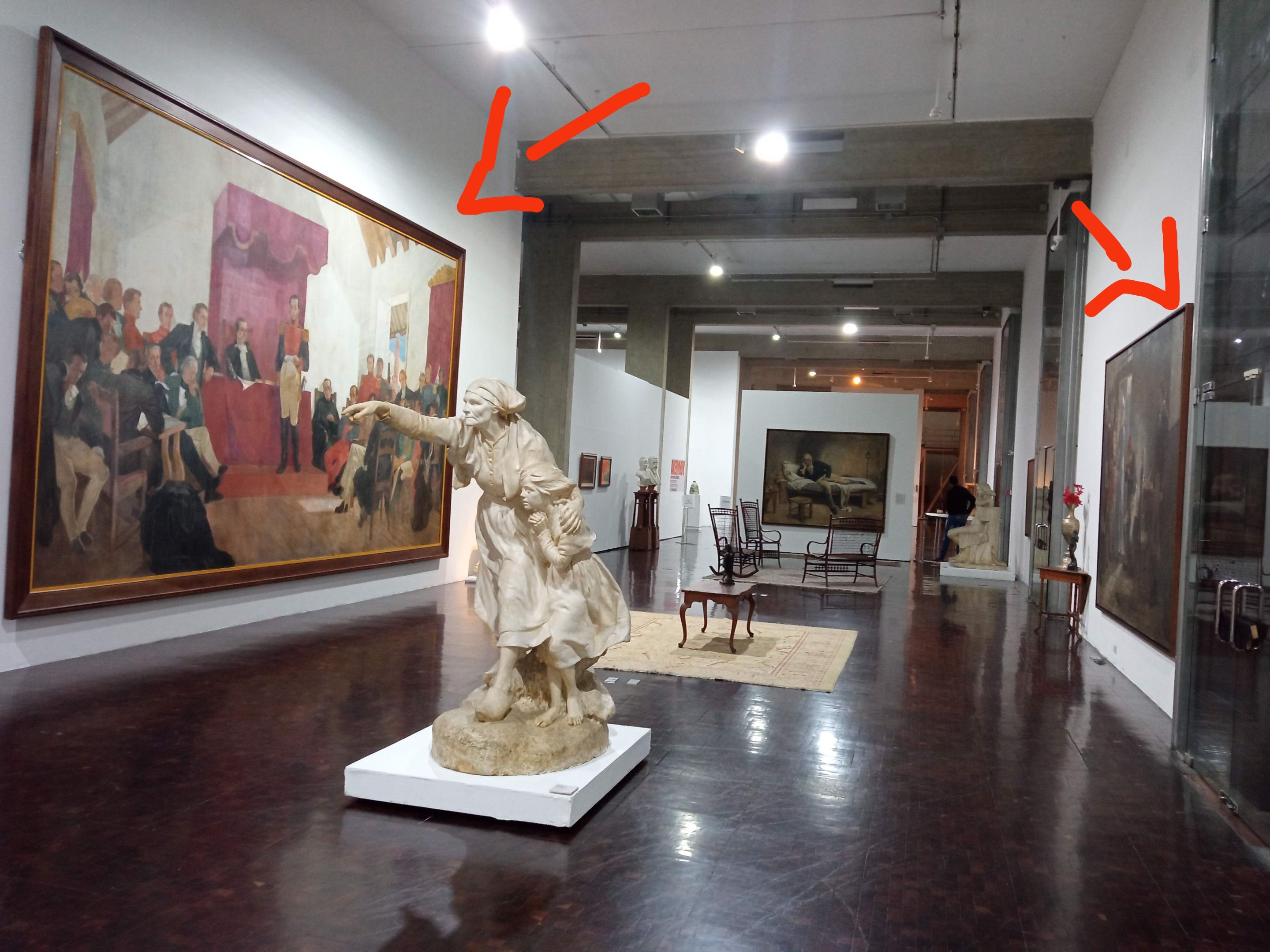
Este cuadro se encuentra exhibido en los espacios de la Galería de Arte Nacional en Caracas, junto con otra obra, también de Arturo Michelena, titulada Carlota Corday camino al cadalso, de 1889, y un lienzo de gran formato realizada por Tito Salas en 1941, conocida como Congreso de Angostura.
This painting is exhibited at the Galería de Arte Nacional in Caracas, together with another work, also by Arturo Michelena, entitled Carlota Corday camino al cadalso, from 1889, and a large format canvas painted by Tito Salas in 1941, known as Congreso de Angostura (Angostura Congress).
----
Gladys Yunes Yunes / Fotos: Gladys Yunes Y.
Fuentes: "Miranda en La Carraca", de Arturo Michelena IAM Venezuela // https://iamvenezuela.org › Todos/ consulta: 22-4-25
